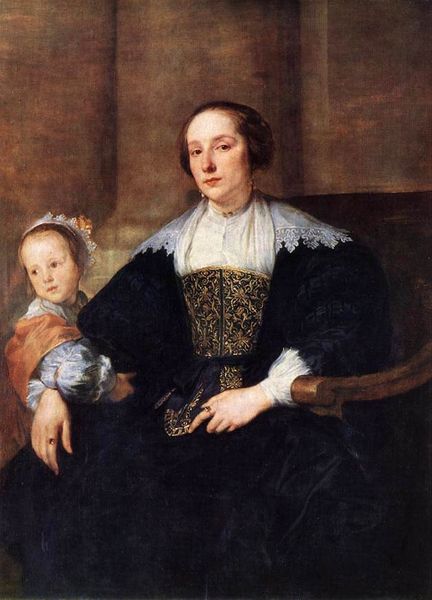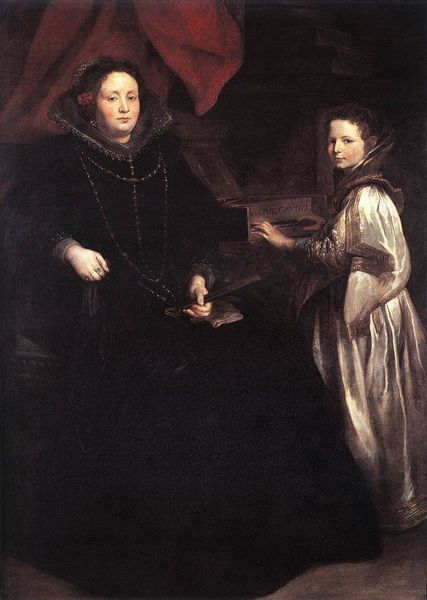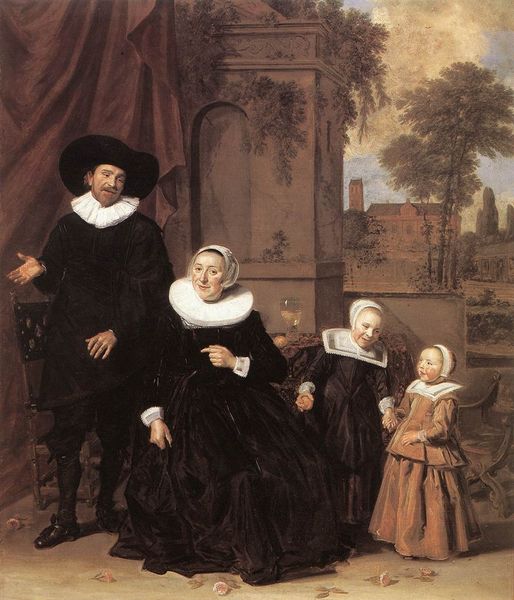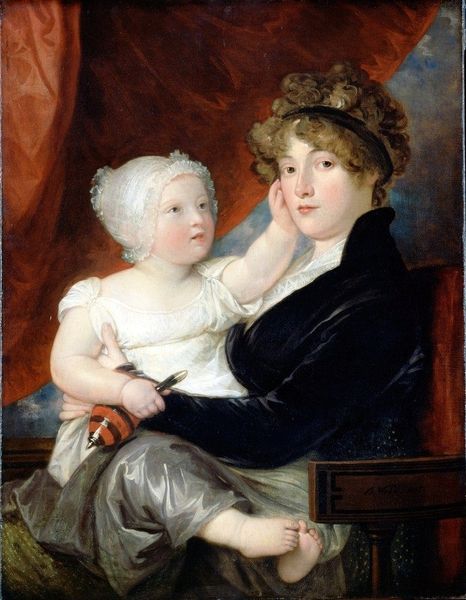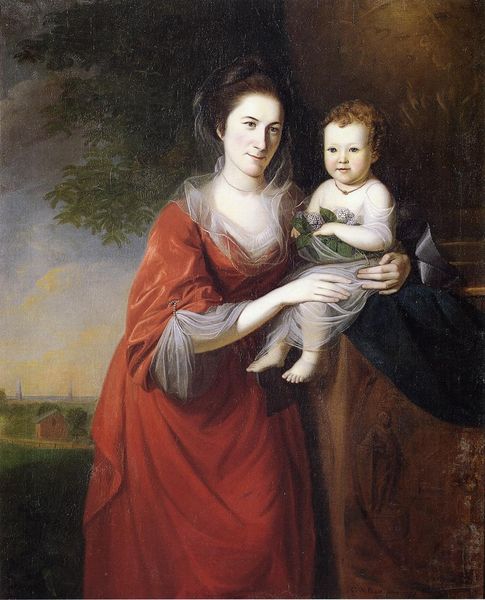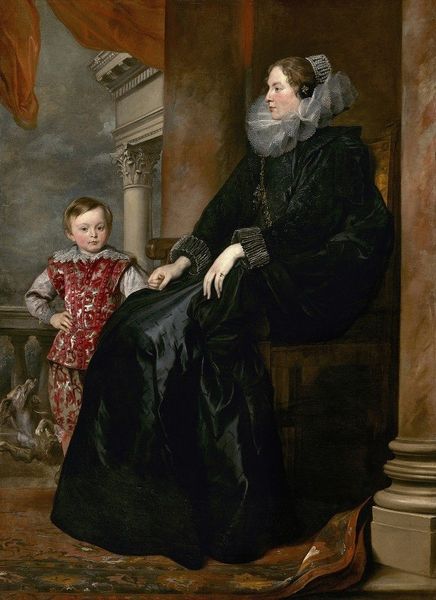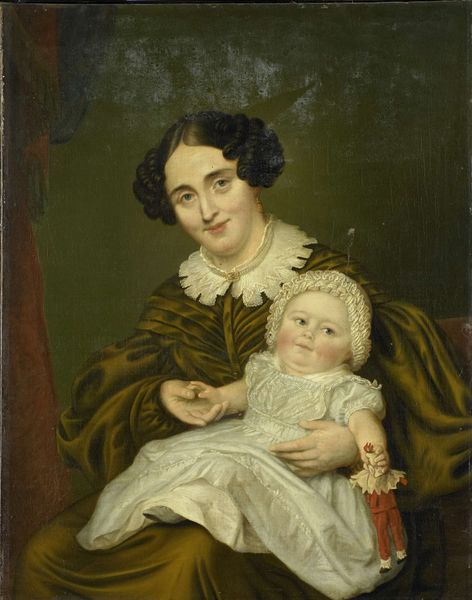
painting, oil-paint
#
portrait
#
baroque
#
painting
#
oil-paint
#
figuration
#
oil painting
#
genre-painting
Copyright: Public domain
Curator: Before us hangs Anthony van Dyck’s "Portrait of Susanna Fourment and Her Daughter," painted circa 1620. Van Dyck, of course, served as court painter for the English monarchy, but let’s examine this example from his earlier years in Antwerp. Editor: Immediately, I’m struck by the rather austere formality of it all. There's an undeniable grandeur, but also something reserved, especially in the color palette, which feels quite muted despite the sumptuous fabrics. Curator: It reflects a very specific visual language intended to convey the sitter's social standing. Susanna Fourment was the sister of van Dyck’s mentor, Peter Paul Rubens’s wife, so the portrait is imbued with socio-political meanings tied to wealth and power in Antwerp. Editor: The textural contrasts are just fantastic—look at the crisp, almost starched quality of the ruff against the sheen of her silk dress. Then there's the fur stole draped across her shoulders adding depth and visual richness. The way Van Dyck renders the interplay of light on those varied surfaces creates an almost tactile experience for the viewer. Curator: Yes, and how interesting that in portraits of wealthy women of the period the inclusion of children underscores themes of lineage and familial continuity, further cementing the family's place in society. We have a somewhat standard image of familial promotion. Editor: It’s hard to ignore the slightly melancholy expression of the sitters. While technically masterful, the composition with its rather rigid verticality lends the portrait an almost melancholic tone. It’s an intriguing divergence from the overt optimism we often see in Baroque portraiture. Curator: Right, it also suggests some of the realities of marriage and the pressures on women within the aristocratic classes, tasked with upholding social order through their domestic role. Van Dyck provides more than simply a likeness here. Editor: Exactly. And even though I recognize the historical context you provide, my first reading relies on the formal devices creating the immediate effect. Ultimately, the effectiveness emerges from that tension. Curator: Thank you, I believe our audiences will benefit from listening to both perspectives of the Van Dyck painting.
Comments
No comments
Be the first to comment and join the conversation on the ultimate creative platform.



